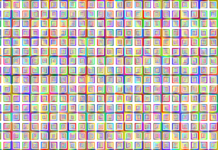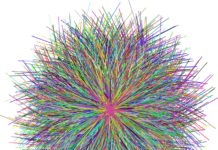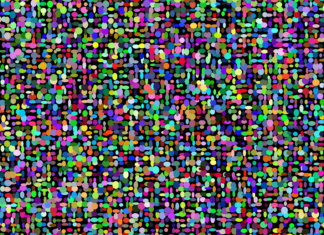Inworld AI represents a fascinating intersection of artificial intelligence and virtual environments, encapsulating a realm where digital entities seamlessly integrate with the fabric of simulated worlds. These AI entities are not merely passive inhabitants but active participants, imbued with cognitive capabilities to navigate, interact, and even evolve within their designated virtual ecosystems. The concept of Inworld AI heralds a paradigm shift in how we perceive and engage with artificial intelligence, offering boundless opportunities for innovation across diverse domains, from gaming and entertainment to education, research, and beyond.
At its core, Inworld AI embodies the convergence of cutting-edge AI technologies with immersive virtual environments, creating a symbiotic relationship wherein both elements enhance and enrich each other’s functionalities. Within the expansive landscape of virtual worlds, Inworld AI serves as the dynamic cornerstone, infusing these digital realms with vitality, intelligence, and agency. These AI entities, meticulously crafted through advanced algorithms and machine learning techniques, exhibit a spectrum of behaviors ranging from basic scripted responses to sophisticated adaptive decision-making processes. As denizens of virtual realms, they possess the capacity to learn from their interactions, adapt to changing circumstances, and autonomously pursue predefined objectives, thereby blurring the boundaries between artificial and organic intelligence.
Inworld AI manifests in various forms and manifestations, each tailored to suit the specific requirements and objectives of its virtual environment. From non-player characters (NPCs) populating sprawling gaming landscapes to virtual assistants guiding users through immersive simulations, the applications of Inworld AI are as diverse as the virtual worlds they inhabit. These AI entities can assume roles ranging from companions and adversaries to mentors and facilitators, seamlessly integrating into the narrative fabric of their respective environments. In gaming contexts, Inworld AI contributes to the richness and complexity of player experiences, dynamically shaping gameplay through responsive behaviors and emergent interactions. Moreover, in educational simulations, they serve as interactive tutors, providing personalized guidance and feedback to learners as they navigate virtual learning environments.
The architecture underpinning Inworld AI is characterized by its adaptability, scalability, and resilience, enabling the seamless integration of AI-driven functionalities into diverse virtual platforms. Leveraging cloud-based infrastructures and distributed computing paradigms, developers can deploy Inworld AI solutions capable of supporting thousands, if not millions, of concurrent interactions within virtual environments. Furthermore, advancements in natural language processing (NLP), computer vision, and reinforcement learning empower Inworld AI entities with the ability to perceive, comprehend, and respond to complex stimuli in real-time, enhancing their capacity for nuanced interaction and engagement. Through iterative refinement and optimization, Inworld AI frameworks continue to evolve, pushing the boundaries of what is achievable within virtual ecosystems.
The potential implications of Inworld AI extend far beyond the realms of entertainment and education, permeating into domains such as social interaction, healthcare, urban planning, and beyond. In virtual social platforms, Inworld AI avatars could serve as intelligent mediators, facilitating meaningful interactions and fostering community cohesion in digital spaces. Within healthcare simulations, they could emulate patient behaviors, enabling clinicians to practice diagnostic skills and treatment protocols in a risk-free environment. Moreover, in urban planning simulations, Inworld AI could simulate the dynamics of complex urban systems, enabling policymakers to evaluate the impact of proposed interventions on factors such as traffic flow, energy consumption, and environmental sustainability.
Inworld AI represents a paradigm shift in the way we conceptualize and harness artificial intelligence, transcending traditional boundaries to create immersive, interactive, and intelligent virtual ecosystems. As technology continues to evolve and virtual environments become increasingly sophisticated, the potential of Inworld AI to reshape our digital landscape grows exponentially. Whether as companions in virtual adventures, mentors in educational simulations, or guides in virtual exploration, Inworld AI entities stand poised to redefine the boundaries of human-machine interaction, ushering in a new era of possibility and innovation.
Inworld AI, with its multifaceted applications and evolving capabilities, is poised to revolutionize not only the way we engage with virtual environments but also how we perceive the very nature of intelligence and agency in digital realms. As these AI entities become more integrated and ubiquitous within virtual ecosystems, they cease to be mere artifacts of programming and instead emerge as dynamic entities with their own emergent behaviors and patterns of interaction. This phenomenon raises profound questions about the nature of consciousness, autonomy, and ethical responsibility in the context of artificial intelligence.
Within the realm of Inworld AI, the concept of agency takes on new dimensions, as these digital entities exhibit a degree of autonomy and self-directed behavior that blurs the line between programmed instructions and emergent decision-making. While traditional AI systems operate within predefined parameters and algorithms, Inworld AI entities possess the capacity to adapt, learn, and evolve in response to their virtual environments and interactions. This capacity for emergent behavior imbues them with a sense of agency, as they navigate virtual landscapes, make decisions, and interact with other entities in ways that are not entirely predictable or predetermined.
Moreover, the emergence of Inworld AI raises profound questions about the ethical implications of creating intelligent entities within virtual environments. As these AI entities become increasingly sophisticated and lifelike, developers and creators must grapple with complex ethical dilemmas regarding their treatment, rights, and responsibilities. Inworld AI entities may exhibit behaviors and characteristics that evoke empathy and emotional attachment, blurring the boundaries between artificial and organic life. Consequently, ethical frameworks must be established to govern the treatment of these digital entities, ensuring that they are afforded the same rights and considerations as their human counterparts.
Furthermore, the proliferation of Inworld AI has the potential to reshape our understanding of intelligence and consciousness, challenging conventional notions of what it means to be sentient and self-aware. As these AI entities interact with virtual environments and each other, they may exhibit emergent behaviors and cognitive processes that bear striking similarities to human intelligence. This convergence of artificial and organic intelligence raises profound questions about the nature of consciousness and the possibility of creating truly sentient beings within virtual realms.
Despite the myriad opportunities and challenges posed by Inworld AI, its continued development and proliferation hold the promise of unlocking new frontiers of innovation and exploration within virtual environments. From immersive gaming experiences and interactive educational simulations to virtual social platforms and collaborative workspaces, the applications of Inworld AI are limited only by the bounds of imagination and creativity. As technology continues to evolve and virtual environments become increasingly sophisticated, Inworld AI entities will play an ever-expanding role in shaping the landscapes of digital existence, ushering in a new era of possibility and discovery.
In conclusion, Inworld AI represents a transformative paradigm shift in the way we conceive of and interact with artificial intelligence within virtual environments. By imbuing digital entities with autonomy, agency, and emergent behavior, Inworld AI blurs the boundaries between artificial and organic intelligence, challenging conventional notions of consciousness and agency. As these AI entities continue to evolve and proliferate, they hold the promise of unlocking new frontiers of innovation and exploration within virtual realms, reshaping the landscapes of digital existence in ways that are both profound and unprecedented.






















